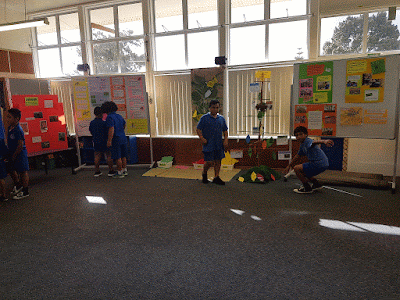Talofa lava, Malo e lelei
This term we are focusing on the two Pacific countries of Tonga and Samoa. We are going to learn about these two countries and how they are similar and how they are different.
Today we were so excited as some of the Tongan students brought Tongan clothes to show us. They dressed in their clothes with some help from others.
 |
| Eli, Aleki, Kaulave and Sione being helped by others. |
Kaulave is his ta'ovala, kafa, tupenu and Tongan design shirt.
Aleki in his ta'ovala.
Eli with her kiekie and dressed in ta'ovala and kafa.
Sione with his ta'ovala.
Christina with a shell from her kahoa.
Ta'ovala: The ta'ovala is the traditional woven mat worn by Tongans.
Kiekie: The kiekie is worn around the waist of a woman dressing up to go out.
Kafa: The Kafa is a braided rope, used to tie the ta'ovala, like a belt. It is worn by men and women and it can be made from a lot of things.
 |
| Our proud students: Sione, Aleki, Kaulave, Christina and Eli |























